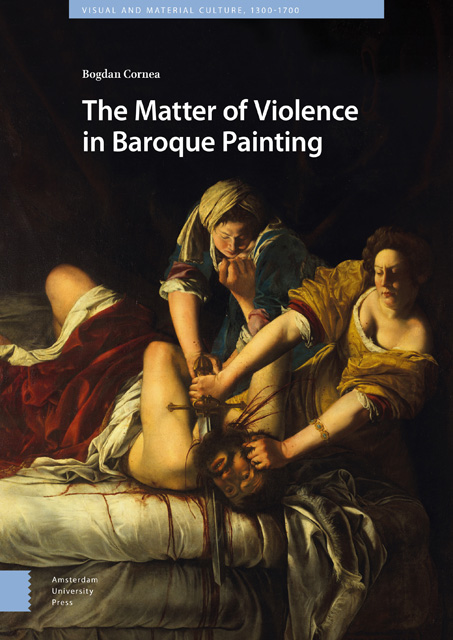Book contents
- Frontmatter
- Table of Contents
- Acknowledgments
- List of Images
- An Introduction
- 1 Wound: On Caravaggio’s Martyrdom of Saint Ursula
- 2 Touch: On Giovanni Lanfranco’s Saint Peter Healing Saint Agatha
- 3 Skin: On Jusepe de Ribera’s Martyrdom of Saint Bartholomew
- 4 Flesh: On Georges de La Tour’s Penitent Saint Jerome
- 5 Blood: On Artemisia Gentileschi’s Judith Slaying Holofernes
- 6 Death: On Francisco de Zurbarán’s The Martyrdom of Saint Serapion
- Conclusion
- General Bibliography
- Index
3 - Skin: On Jusepe de Ribera’s Martyrdom of Saint Bartholomew
Published online by Cambridge University Press: 18 April 2023
- Frontmatter
- Table of Contents
- Acknowledgments
- List of Images
- An Introduction
- 1 Wound: On Caravaggio’s Martyrdom of Saint Ursula
- 2 Touch: On Giovanni Lanfranco’s Saint Peter Healing Saint Agatha
- 3 Skin: On Jusepe de Ribera’s Martyrdom of Saint Bartholomew
- 4 Flesh: On Georges de La Tour’s Penitent Saint Jerome
- 5 Blood: On Artemisia Gentileschi’s Judith Slaying Holofernes
- 6 Death: On Francisco de Zurbarán’s The Martyrdom of Saint Serapion
- Conclusion
- General Bibliography
- Index
Summary
Abstract
Chapter Three explores the relationship between corporeality and paint in Jusepe de Ribera’s Martyrdom of Saint Bartholomew (1644). By tracing the critical reception of Ribera’s art, the chapter identifies a common tread in locating the violence of his paintings in paint’s potentiality to become flesh. Ribera thus confronts beholders with a violence that is inflicted upon the painting as a body. This complicates the act of martyrdom to the extreme. For unlike in previous versions of the canvas where Bartholomew is shown facing a redeeming light, in this last surviving painting, Ribera shows facing us the beholders in an unresolved act of disturbing violence. For this is not a violence that will end soon with the saint’s demise – and the promise of divine redemption – but continues to be enacted forever on the painted canvas.
Keywords: Jusepe de Ribera, skin, paint, materiality, corporeality, flaying
All works of art are scar tissue.
– John BanvilleA cold stare – pointed straight at us from the surface of the canvas. It makes one wonder and pause: Is it a look of despair or staunch resolution? Or perhaps it is neither, for it is difficult to resolve what it is trying to convey. There is no rage, nor there is the promise of divine bliss. His eyes are wide open and his forehead full of wrinkles rendered in solid strokes of the brush. He struggles to look at us – to keep looking at us. His neck is bent and his torso is contorted; another strain on a body that is already undergoing such an extreme form of suffering – to have one’s skin slowly flayed from living flesh. And live to see one’s own body turned into an open wound.
In the Martyrdom of Saint Bartholomew (1644) (Image 9), Jusepe de Ribera painted the saint with a stare and a glance that transforms us, the beholders, from detached observers into objects of intense scrutiny. Between his gaze and ours an entire world unfolds; a world caught in the textures of the linen cloth, of cut skin, and surfaces stretched on the easel of a canvas. His gaze performs an extreme reversal of the roles, where the viewer paradoxically becomes the viewed.
- Type
- Chapter
- Information
- The Matter of Violence in Baroque Painting , pp. 73 - 96Publisher: Amsterdam University PressPrint publication year: 2023



